EmbracingImperfections
Finding the beauty in our flaws and learning to grow from them


Finding the beauty in our flaws and learning to grow from them

People can be quick to judge in our society, but it is vital to realize that instead of judging our imperfections, we can learn to grow from them. Flaws represent the elements in our lives we think we would be better off without, and as high schoolers, it can be easy to point out those flaws within ourselves and even the people around us. By celebrating our individual and collective imperfections, a welcoming environment is formed as we can become stronger and united through the challenges we face.

 Katie Pfotenhauer
Katie Pfotenhauer
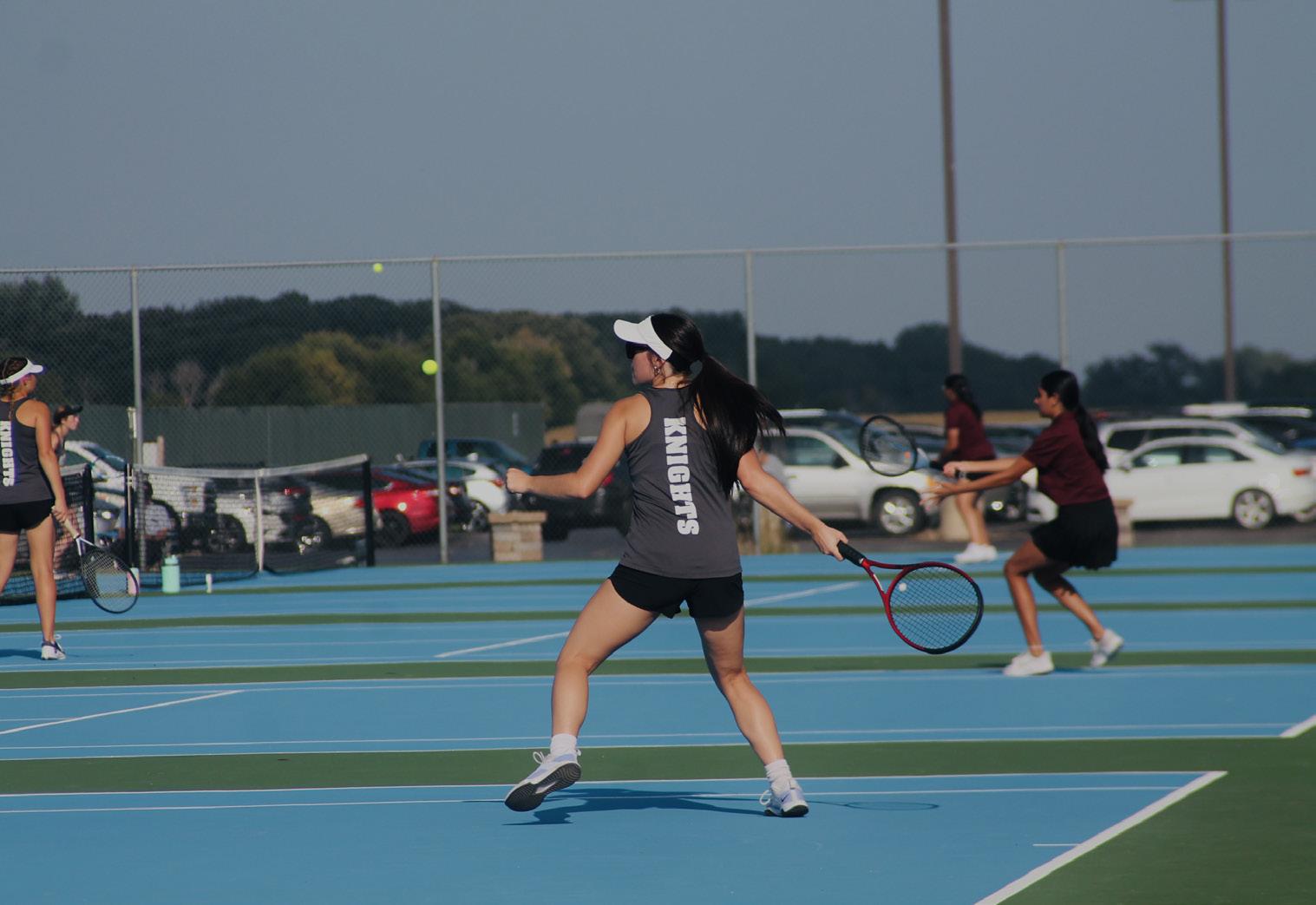
The Illinois Physical Fitness Assessment (IPFA) is a mandatory evaluation administered to students enrolled in physical education courses throughout the state, including the Kaneland district. Historically, students have been required to undergo testing at the beginning and the end of each semester. However, the COVID-19 pandemic led to the fitness test not being used in recent years. As the district and state return to pre-pandemic policies, the IPFA has been reinstated, and each student is required to undergo testing once again.
The IPFA consists of the push-up, sit-and-reach, sit-up and PACER tests. In 2014, Public Act 98-0859 was signed into law, creating the Stakeholder and Expert Task Force on Physical Education (SETFPE). Schools are required to submit any physical fitness data requested by the state. The assessment evaluates each student on their aerobic capacity, flexibility and muscle strength.
One frequently discussed topic regarding the IPFA is whether or not the test is sexist. The assessment benchmarks vary from gender to gender. Required scores for females are much lower than males, sometimes being one third of the male required score.
According to a Marine Corps Times article by senior reporter Jeff Schogol, the Marine Corps has had similar questions about their testing, with women oftentimes feeling disrespected having to achieve lower scores than men.
There has also been talk about the IPFA test being ableist, but in recent years the rules have been modified to have specific sections for people who can’t take one of the tests for any reason.
Throughout the semester, students are encouraged to make strides in their physical health with the help of the IPFA. By the end of the semester, students should see a considerable improvement in their scores, which then serves as proof of their progress. The state mandates that students engage in physical activity each day of the week unless they have received a state-granted waiver. The IPFA is designed to help students meet their requirements while also tracking their progress. The PACER test measures students’ aerobic capacity, while the push-up and sit-up tests measure their muscular strength and endurance. The sit-and-reach test, on the other hand, is focused on flexibility. The expectations for each test are tailored to each student’s age, gender and ability, with older students typically required to do more of each exercise.
Physical Education (P.E.) Department Chair Ernie Colombe has been teaching P.E. for 26 years and can see the benefits of monitoring students’ fitness progress.


“Nothing is more important than a person’s health. Learning where you are at and setting goals to improve your health and develop good habits at a young age is important,” said Colombe, who is also the head boys varsi -
ty basketball coach.
Some students might have assumed that because the tests stopped for three years, they would not come back. After COVID was declared over as a public health emergency on May 11, 2023, by the U.S. Department of Health and Human Services, the SETFPE decided that students must start taking the tests again.
“The test stresses me out when I first think about it, but I feel good after running it knowing I’ll get to see my progress at the end of the semester,” junior and multi-sport athlete Freddy Hassan said.
While some students may feel that way, others may disagree.
By law, though, instructors are obligated to have each student take the PACER test, regardless of their personal opinions on the matter.
Senior Luke Bucholz hasn’t taken any mandated physical assessments since middle school, and as the school begins to reestablish them in the curriculum, students like Bucholz have been opposed to accepting them as a necessity.
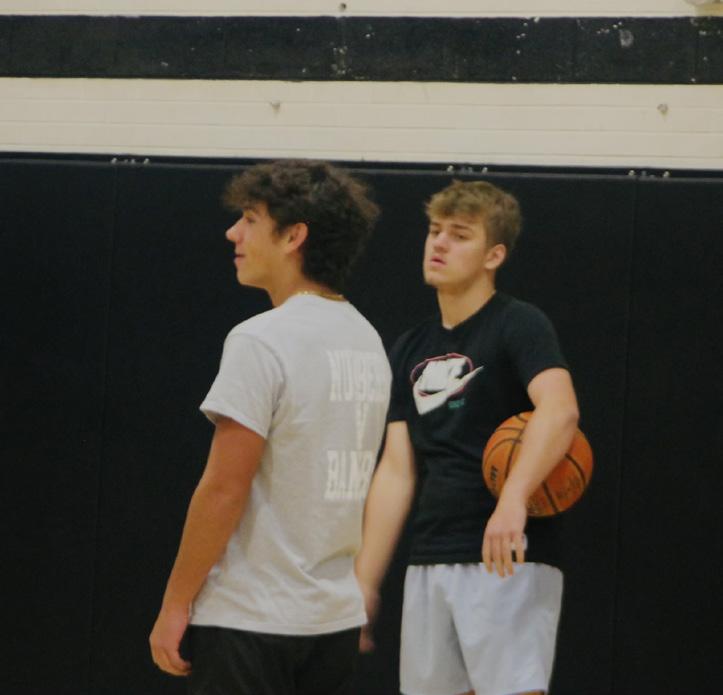
“I feel like they don’t prove or show anything [about a student’s physical abilities],” Bucholz said. “Ever since COVID-19, no one has cared to try again in gym.“
Despite mixed feedback, schools are unable to change or remove the test. At present, it appears the IPFA is here to stay.
We have been warned for decades that artificial intelligence (AI) would one day take over the world. From the Terminator’s Skynet to the very first idea of robots claiming control back in a 1921 science-fiction play written by Karel Čapek entitled Project Gutenberg’s R.U.R. (Rossum’s Universal Robots), many people have predicted the world being dominated by robots, and now that fear is seemingly becoming more realistic.
Popular Science conducted a study that revealed the number of publications focusing on AI has almost doubled from 162,444 in 2010 to 334,497 in 2021. According to Tech Jury, approximately 77% of businesses are either using or exploring the usage of AI, which could eventually lead to almost every business using AI in some form. Justin McGill, the founder of Content at Scale, a first-of-its-kind content automation tool incorporating AI, led a study in March on how many AI startups there were and how many actual websites or products were using AI. There are 14,700 AI startups in the United States alone, and there are predicted to be hundreds of thousands of products that rely on AI completely. Many of these products have become increasingly popular with students and teachers alike.
In high school and middle school, the use of AI has become more apparent. Many students will use chatbots like Photomath or ChatGPT to try and cheat on their tests or homework. Other students may use them as tools to help them understand a concept or find inspiration. Even though both types of students use the same apps, some see their purposes differently.
“I think that people who use [those apps] to purposely cheat are very lazy and just don’t want to put in any effort,” junior Keiton Westfall said. Instead of asking a teacher to help, some students first go to the seemingly unlimited resources their phones provide them. Westfall said, “I have used ChatGPT
to help spark an idea of what I want to write. Copying and pasting word for word what the app says is what I consider cheating.”

ChatGPT was launched on Nov. 30, 2022, rising to fame within a few days and quickly gaining close to one million users due to the attention it was getting on social media apps like TikTok, Instagram and Twitter. What made ChatGPT truly popular was that unless you knew that it was a robot, the responses seemed as if they were coming from a human. OpenAI, the developers of ChatGPT, used an advanced coding system to make the replies seem human and natural. However, according to the OpenAI Help Center, “It is important to keep in mind that this is a direct result of the system’s design (i.e. maximizing the similarity between outputs and the dataset the models were trained on) and that such outputs may be inaccurate, untruthful, and otherwise misleading at times.”
The popularity of the app also caught the interest of writers Trey Parker and Matt Stone, the creators of the popular animated series South Park. They wrote an episode entitled “Deep Learning” that aired in March and took a jab at people using ChatGPT in schools and relationships, while also being co-written by the app itself.
While ChatGPT is a widely known app that students use for different reasons, Photomath is also an extremely popular tool used by students who take pictures of their assigned problems and then seek solutions to the equations.
“Photomath is a great tool to help learning,” math teacher Kristin Massey said. “It can show students and teachers new ways of solving and give ideas on how you can solve something.”
Sophomore Luke Pawlak agrees with Massey, as he also sees the benefits of Photomath from a student perspective. “I love Photomath because it’s a great way to check your answers,” Pawlak said. “I have used [Photomath] because when I don’t know an answer
to a problem or am confused, it helps me out.”
With the apparent rise of students using AI resources to cheat, though, there are teachers who are planning to address the issue in their classes. English teacher Kristen Johnson has caught students using ChapGPT multiple times and has made them redo the assignment they cheated on.
“Using ChatGPT runs on the same equivalent of plagiarism, in that the expectation is that they rewrite it and that there is a referral written for academic dishonesty,” Johnson said. “There is more legwork on my part to prove it, meaning that I have also used ChatGPT to see what it does and to give more evidence to the student who was caught cheating.”
In math classes, the repercussions are similar. “I have to talk to them and tell them that I know they used Photomath and let them know that the whole point of [their work] is to do your own,” Massey said. “I give them the option to redo it, and if they choose to redo it, they have to redo it with me after school. And until they redo it, the score stands at a zero.”
Just like teachers, administrators can also use apps like ChatGPT and Photomath to understand how and why students use them. With tools that can do work for students and teachers alike, more people can abuse them, making it harder for people to complete work truthfully. Principal Dr. James Horne, with his roles as an administrator, a parent and a former classroom teacher, has a unique perspective.
“If it is being used as a learning tool to expand the student’s understanding of something, I think it is great,” Horne said. “If it is being used to complete assignments and get the student out of completing a task, this is not helpful as the student is not learning. As a society, we face a difficult challenge regarding AI, as the technology is growing faster than our understanding of how to utilize it.”
“Recognizing the benefits and drawbacks of AI use at KHS”
Write me a headline about artificial intelligence use at Kaneland High School
Prominent on the news and social media platforms and devastating to the lives of many, wildfires in various parts of the world have continued to rage and cause destruction. The consequences of global warming causing an increase in temperatures and some preventable human mistakes have led to wildfires in Hawaii, Canada and Greece that have dominated our collective attention, but they have occurred in plenty of other places as well. As these problems persist, the catastrophic impact they have on the people in affected areas continues to be felt.
On Aug. 8, a fatal wildfire broke out in Lahaina, Hawaii. Although residents tried to escape, over one hundred fatalities have been attributed to the fire, with more than 800 people still unaccounted for. Anyone who was there will forever remember the disaster as a heartbreaking and traumatic event that left 2,170 acres burned and 2,700 structures destroyed, according to CBS News.
“If it wasn’t for my son, who woke us up at the right moment, we all would have burned along with my home and town,” said Sophie Mata’afa, who lived in Lahaina for more than 30 years.
At the time of this publication, officials believe the fire started from power lines that fell during high winds. According to CBS News reporter Emily Mae Czachor, much of Hawaii had been under a red flag warning due to winds caused by Hurricane Dora, which was moving through the Pacific Ocean south of Hawaii. Hawaiian Electric Co. took responsibility for the start of the first fire but claimed that they were not responsible for the second. Hawaiian Electric is an electric services company that “serves 95 percent of Hawaii’s 1.4 million residents,” according to their homepage.
NPR reporters Bill Chappell and Ravenna Koenig described the lawsuit that Maui County filed against Hawaiian Electric, claiming they were negligent. The electric company says that firefighters who arrived at the scene in its early
BY ADRIANNA WELLS Editorstages are also to blame, as county firefighters preemptively declared the fire contained. Officials have forecasted repairs for the damage to cost more than $5.5 billion, but the lasting impact will go beyond the financial consequences as survivors grapple with a range of emotions.
The problem of wildfires has also impacted Canada, and residents in Illinois even experienced the ramifications this past summer when air quality alerts were a common occurrence. Fires have continued to burn, causing some to wonder if smoke-filled air is just going to be a normal part of summers moving forward. Daniel Perrakis, a fire research scientist with the Canadian Forest Service in British Columbia, said in an interview with NPR that there are American newspapers from the early 1900s reporting on wildfire smoke from Canada settling in over their regions, so this is not unprecedented. Climate change has, in his opinion, made this past summer worse than normal, though.
“Some people are like, ‘Well, this is climate change. This is terrible. We’ve never seen this before.’ That’s wrong. We’ve seen this plenty of times. But it is [also] climate change, and it is much worse than we’ve seen before,” Perrakis said.
The fires in Canada’s western province of British Columbia have caused several highways to be closed. According to an Aug. 27 report from the Associated Press (AP), British Columbia reported 370 active blazes, including 12 designated as “wildfires of note.” AP News also mentioned that 240 fires were burning in northern territories.
“It’s not over yet for us by a longshot,” said Donna MacPherson, the Fire Information Officer for the British Columbia Wildfire Coordination Centre. “It’s been a really long fire season, and we’ve still got some to go before it’s over.”
With wildfires becoming more frequent and widespread, more
precautions are being taken in some places. In Greece, for example, recent events in Evros have led to dozens of arson-related charges, according to a CNN report. However, many feel Canada is not taking enough steps to prevent future disasters.
“We need to do more to get ahead of the problem,” said Mike Flannigan, who studies wildfires at Thompson Rivers University in Kamloops, British Columbia, in a New York Times report. “And progress on that has been slow, primarily because we are kind of stuck in this paradigm that fire suppression is the solution.”
The heart-wrenching impact of wildfires can be felt through the stories of those who have survived. Benjie Navarro, a senior nurse in an East London hospital, told The Independent that his family lost everything in the Lahaina fires. Navarro was planning an early-September trip to Maui to visit his mom, whom he had not seen in eight years, for her birthday. He also detailed the moments of his family’s escape from their home right before the fires consumed it.
“They lost everything in the fire except for the car they used to escape,” Navarro said. “They have lost their means of livelihood, they’re jobless. They’re spending their savings on petrol to get rations and food for the kids to eat.”
As the frequency and intensity of wildfires continues to spread, difficult stories of loss of life and property will likely remain.
1
3
 BY CARMELLA RIO & KATIE PFOTENHAUER Editior & Co-Editor-in-Chief of Print and Co-Copy Editor
BY CARMELLA RIO & KATIE PFOTENHAUER Editior & Co-Editor-in-Chief of Print and Co-Copy Editor
For senior student-athletes, the fall sports season often signals the beginning of the end. While some seniors will go on to play collegiately, plenty of others will enter their sports seasons knowing it will be the last time they play competitively. Athletes of all ages contribute to a team’s success, but seniors carry the responsibility of laying the foundation for each program’s underclassmen. The relationships developed between younger student-athletes and senior-level teammates can significantly dictate the future of each program. Seniors’ influence goes beyond athletics by guiding the team on and off the field.

When football captain and senior Troyer Carlson was a freshman, he got moved up to varsity for the second game of the season. As a new teammate, he naturally looked up to the seniors on the team.
“Seniors instilled confidence in me right away,” Carlson said. “They were all nice to me and helped me learn the offense.”
As Carlson has been on the varsity football team since his freshman year, the knowledge he has gained from past seniors and what he has learned can be shared as he recounts those experiences with his younger teammates.

“As a senior, it has been the same way by helping the younger players learn the plays and where to go while also giving them confidence to play the best they can,” he said.

Softball player and senior Corinne Pugh has been on the varsity softball team since her sophomore year. As a young athlete, she thought what she could do with the team would be limit -
ed, but the rest of the team made sure she felt included.
“They would always be the first ones to reach out and say, ‘If you need a ride, let me know,’” she said. “I did not have my license then, so I could not go that many places because of the limitations that came with me being a younger teammate.”
Whether captains or respected players, seniors often fulfill leadership roles that may extend beyond the playing field, therefore leading by example. They set the tone for the games, practices and tryouts, but no matter what, they treat every player like a team member.
“The biggest thing is leadership and always being there for everyone no matter the position or how much they play,” Pugh said. “As a leader, you must treat teammates with the same respect you want.”
Teammates want to be treated fairly. Seniors can create an environment where everyone feels heard, as trust among teammates can be valuable when wanting to play as one team.
“It comes down to the game,” Pugh said. “If we were not able to trust each other, we would not be able to trust each other to make a play.”
When playing, seniors can be mentors and role models as they know how their actions can influence the overall dynamic by showing the younger players the value of being an athlete on and off the field.
Through their leadership, they can help the players grow personally but also as a team. Just as a team can win, they can also lose. By offering the mindset of learning through failures instead
of using those failures to set the team back, seniors can boost spirits to avoid frustration and not allow past mistakes to diminish future success.
“The role is to be the center of the team,” head freshmen and sophomore football coach and science teacher Jason Foster said. “Those are the players everyone should be able to come around for a morale boost and positive attitudes. Those players always want to win and compete at the highest level.”
Traditions are also an integral part of sports, and with seniors knowing team dynamics from previous years, they are often responsible for preserving those traditions while cultivating new rituals to improve the team. While traditions differ for each team, they can foster a sense of belonging and unity as players come together for shared experiences.
“For us, there has always been this one tradition that seniors lead,” Pugh said. “Before every game, we always make a circle behind the dugout. Then, we put our pinkies together and pray.”
Seniors unify a team through the knowledge, leadership and traditions gained through their experiences in the program. As seasons conclude, the leadership roles shift.
“[People left in the program] will need to pick up where the seniors left off by building off their successes, learning from their mistakes and continuing to get better,” Foster said.
As younger athletes prepare for the next season, the memories made, trophies won and records broken can resonate as they will learn to navigate their way through the path of their predecessors.
Collegiate sports have undergone many changes within the last five years alone, including name, image and likeness (NIL) deals, extra years of eligibility because of the COVID-19 pandemic and perhaps the biggest change of all: the transfer portal.
The transfer portal is a tool that launched on Oct. 15, 2018, and it permits student-athletes to put their names in an online database declaring their desire to transfer from one school to another. This means if a player is unhappy with the current school they are attending and competing for, they can easily notify coaches and recruiters from other colleges that they are willing to join a different school and compete in their program.
Players may have a desire to transfer for many different reasons, including following a coach to a different program, looking for more playing time, moving somewhere closer to home or seeking an opportunity to have an NIL deal. The transfer portal can be very beneficial for athletes in these positions. However, when players decide to transfer, they are leaving behind their former teammates and coaches, which may cause some strife within the team. The portal has gained attention from high school student-athletes who hope to continue playing in college.
Senior wide receiver and track sprinter Aric Johnson said, “If you enter the portal and end up not transferring, your teammates may view it as you don’t want to be there anymore, and that could really take the morale down.”
The biggest reason athletes utilize the transfer portal is to get a better opportunity for more playing time at a different college. We have seen numerous examples of this in recent history, and current Philadelphia Eagles quarterback Jalen Hurts is a great example. He played as the starting quarterback for the University of Alabama for two seasons before being benched his junior year when Tua Tagovailoa, who is currently the starting quarterback for the Miami Dolphins, started over him. Hurts utilized the transfer portal and took the opportunity to transfer to the University of Oklahoma, where he played for his final year of eligibility and finished second in the Heisman Trophy voting.
Examples like Hurts and the success he found both at Oklahoma and then in the NFL have alerted high school student-athletes with collegiate ambitions to the potential benefits of the portal.
“I think a great advantage is being valued at a place where you weren’t valued at originally,” Johnson said. “You could go somewhere where you’re really wanted, [rather than] staying somewhere you don’t play because they think another player is better than you.”
Jeff Goodman is a basketball analyst who has spent two decades covering the sport at the high school, college and professional levels, and he has experienced collegiate basketball both prior to and after the emergence of the transfer portal. He said, “There’s so much movement that I think it is affecting and will affect the quality of play as much as anything else because you’re going to have a complete roster overall every single year, and not have the chemistry and the continuity that you’ve had over the years.”
Before the transfer portal, college athletes would have to ask their coach for permission before contacting other schools. But that sort of situation has changed dramatical -
ly because of the portal. According to an ESPN report, 8,699 NCAA football players entered the transfer portal between Aug. 1, 2022, and May 1, 2023, with that number exceeding transfer totals in previous years. The University of Colorado in Boulder is a prime example of a team that has benefited from the portal, as new head coach Deion Sanders saw 71 players enter the portal and then filled those vacancies with new talent, according to an Axios report.
“It depends on the situation. It can be really positive, and it could also hurt high school athletes. As it grows, it will slow down recruiting and hold up high school athletes because they have to wait for colleges to find transfers,” head varsity football coach Michael Thorgesen said.
High school athletes now have to worry about current college players who may transfer to the school they are hoping to play for, which could lead to them losing a spot on the team. This can be tough for high school athletes who are simultaneously focused on finishing their sports seasons, applying for college scholarships and doing well in the classroom. Football and basketball players aren’t the only ones who have to think about these possibilities; the portal involves all sports.
Senior volleyball player Rosie Karl, committed to Aurora University, recognizes the range of possibilities in relation to the transfer portal.

“I believe the transfer portal has a lot of negative and positive effects,” Karl said. “Players that happen to improve fast have the opportunity to move to other schools to improve even more. The transfer portal can be negative because it can affect the playing time of athletes who choose to stay.”
As the transfer portal continues to impact the collegiate sports landscape, it can both improve and hurt college sports in multiple ways. Colleges are going to have to find ways to keep and develop athletes in their own programs and not lose them to the transfer portal.
“If athletes just transfer to big schools, then nothing will be left for smaller Division 1 schools like Northwestern or Rutgers,” Thorgesen said.
From bell bottoms to layered tank tops to baby tees, it’s undeniable that fashion trends have changed over the years. But fashion doesn’t just die. It’s reused decades later in a new light.
While it’s not common to see people walking the street in clothes that belong in a ‘50s mom-and-pop diner, many previous fashion trends are recycled and used as inspiration for current outfits. Clothing items like low-rise pants, straight-leg jeans and Reebok shoes have become increasingly popular in recent years just like they were in past decades.
English teacher Jennifer Sayasane was in high school in the mid to late ‘80s and has been a teacher since 1995. She has been able to witness many fashion trends come and go and even participate in some herself.
When Sayasane was in high school, ice-washed jeans were trending, which were dark jeans with a white rinse. While that may not be popular now, the style of jeans is.
“[The jeans] were straight, but we pegged the bottoms. They would be [baggy], but you folded the ends, so they were right at the bottom,” Sayasane said.
That style of jeans went away for a while, but recently, straight-leg jeans, wide-leg jeans and mom jeans have become more popular. However, they aren’t completely identical to the jeans from the ‘80s.

Instead of the plain blue jeans look, people prefer to wear jeans with many holes and rips to give the pants dimension. Sophomore Mikey Conley frequently wears straight-leg jeans. “I like holes because it gives the jeans a little bit of personality, and it’s not so bland,” he said.
Straight-leg jeans aren’t the only trendy pants coming back. Recently, trends from the early 2000s have returned, as low-rise jeans have found their way into people’s closets for the second time this decade.
Junior Lilia Fleshman is very interested in fashion, and one of her favorite pieces of clothing is jeans. “My fa -
vorite style of jeans is flare jeans. When I go out to buy jeans, I mainly look for [those],” Fleshman said. Flare jeans, also known as bell bottoms, were very popular in the late ‘60s and early ‘70s. Fleshman doesn’t just love retro-styled jeans. She is also a big fan of her Reebok sneakers. Reebok was a popular brand in the ‘80s and ‘90s. “I love Reeboks. I wear them every single day, and they’re my favorite shoes to wear,” she said.
Clothing styles aren’t the only trends coming back. Claw clips and scrunchies have become very popular in recent years. Sayasane used claw clips and scrunchies when she was in college, and almost 30 years later, Fleshman uses them now.
“I’ll sometimes use claw clips in my hair…and I’ll usually wear scrunchies around my wrist, so I can quickly throw my hair up,” Fleshman said.
In the ‘90s, scrunchies emerged as bright hair accessories made to stand out. Now, people like to have scrunchies on their wrists because they aren’t tight and don’t damage hair like normal hair ties.
While clothing and fashion trends commonly reappear, complex technology and electronics haven’t been around for many years compared to clothing items like jeans. However, digital cameras and flip phones have become popular again among teens and college students.
Fleshman owns a digital camera from the early 2010s, and she loves that she can just pull out the camera and take a cute photo with her friends.

For high schoolers and college students, carrying around a digital camera to social events has become more popular to take photos with rather than using a smartphone. Retro cameras have a different effect on photos by making them look more nostalgic.

“I really like the look of the photos,” Fleshman said. “I know I could take a photo with my [phone], but a digital camera can take such good photos, and it makes it feel more nostalgic.”
Conley also likes using a Fujifilm Instax polaroid camera for taking photos to keep as memories. “I use my Polaroid for selfies with family and friends,” Conley said. “I like that there are many different styles when it comes to film. I also like how you can hang them up or make a collage.”
Even though time doesn’t stop and trends keep moving, humans are creatures of habit. They look for inspiration from what has already been done, and it becomes the newest thing. The repetition of earlier trends is inevitable.
“One thing I love about myself is my humor because it not only makes other people laugh, but it makes me laugh at myself too. When you laugh or smile, it makes you genuinely happier. [I like] making people laugh with my jokes because it makes people feel comfortable around me.”
“I love that I’m pretty confident. I love that I’m the member of my friend group who can be the therapist, lift the others up and make sure that nobody’s feeling down or having a bunch of problems they face alone.”
- Junior Tom Thill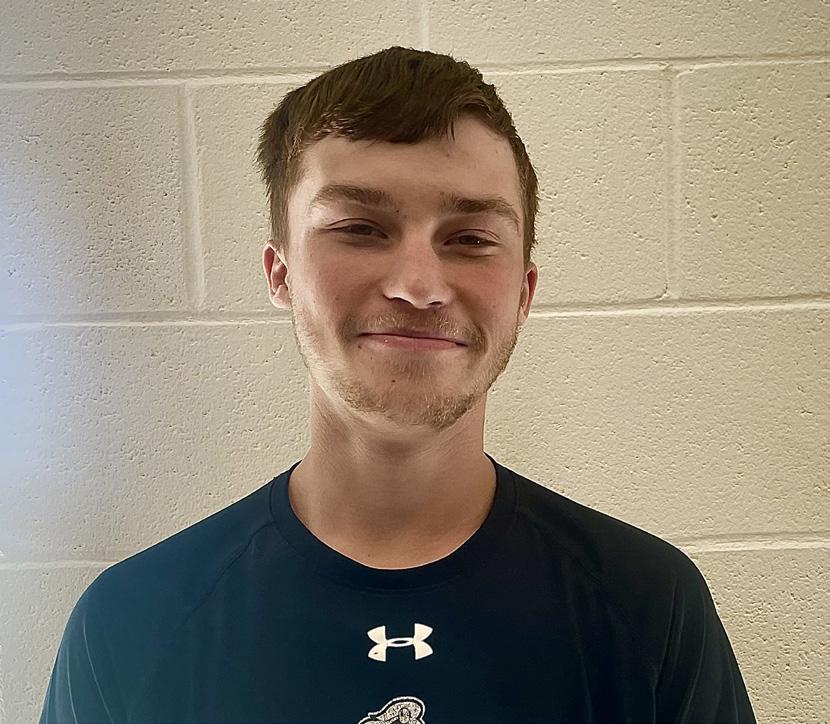
“I love my curious mind because I like the things it has prompted me to do, places I’ve gone and interesting people I’ve met. My curious mind has brought me back to grad school over the summer [because I] visited Rockford for an international conference.”
- Counselor Anne Kuntz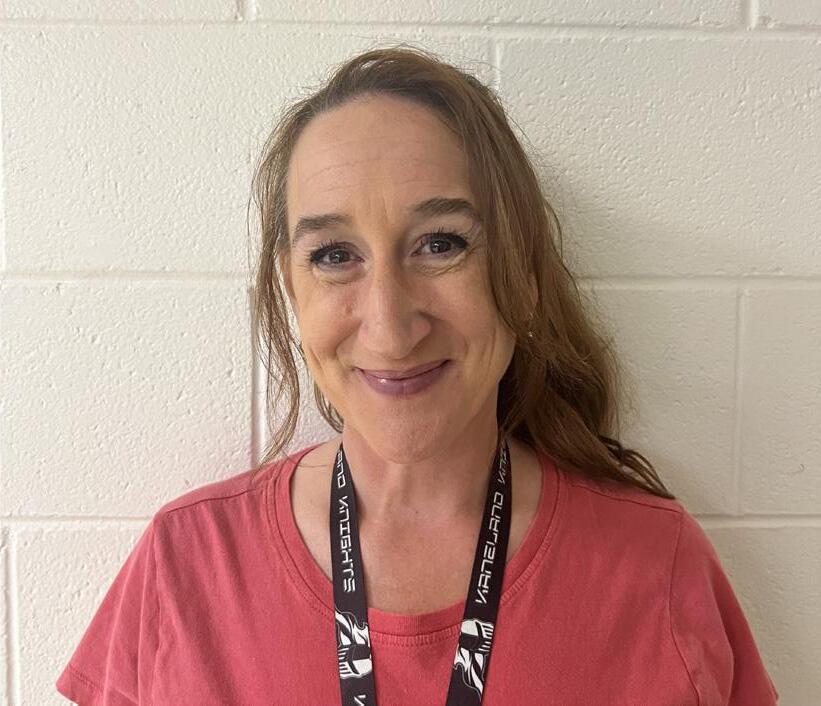
“I love my hair for a couple of reasons. First off, I spend a lot of time and money on my hair, and I make sure it ends up looking fantastic. My hair adds a lot of character to my personality, and I get a lot of compliments on it.”
- Sophomore Masimo Alliaj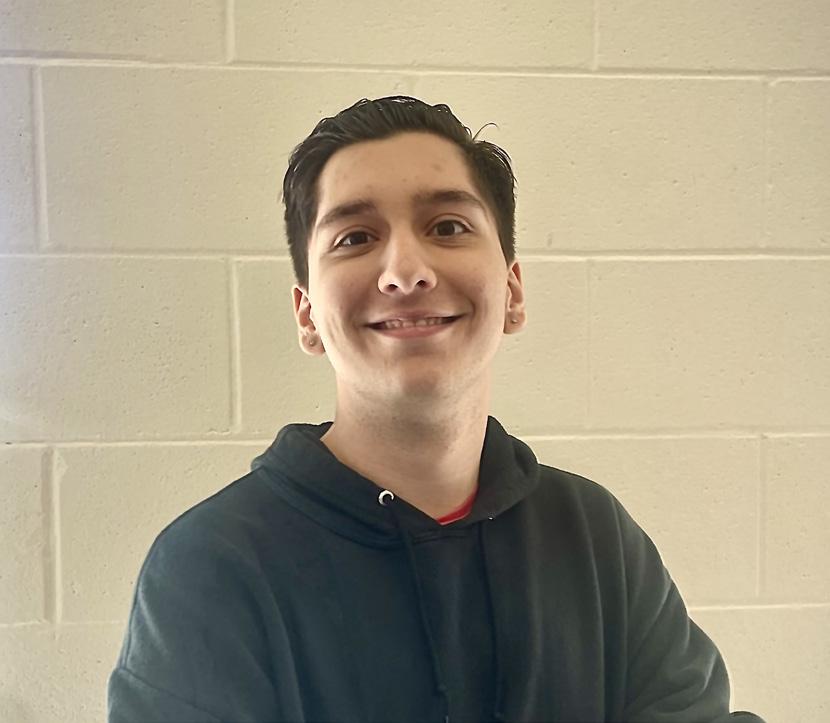
 - Senior Kamber Smith
- Senior Kamber Smith
The Glow Recipe Watermelon Glow Niacinamide Dew Drops is a watermelon based serum formulated with multiple skin-replenishing ingredients that are meant to even out, smoothen and brighten the skin tone.

When I tried it consistently for four days, in the morning and night, it gave my skin a glowy, dewy look that made it feel hydrated and smooth.
For 1.35 ounces of product, the price was high at $35. If you would prefer more inexpensive options, there are other niacinamide drops that are similar, such as The Ordinary Niacinamide 10% + Zinc 1% drops, which cost about $10.80 for 2.03 ounces.

The serum’s most signature feature is the inclusion of watermelon in its ingredients. Not only does it offer vitamins A and C, but the smell of watermelon is very strong and apparent when using it. It is essential to note that the fragrance of the watermelon could irritate your skin. While my skin didn’t react to the drops, others with sensitive skin or severe acne should be mindful.
It is always important to use products that are fit to your skin type, and according to the Glow Recipe’s official website, they preach that this formula is safe for everyone.
“While the formula is not tested non-comedogenic or non-acnegenic, we make sure all ingredients are gentle for all skin types,“ they said.
Although there are many alternatives, the watermelon dew drops made my skin feel fresh and glowy and did what they were formulated to do.
The Drunk Elephant B-Hydra In tensive Hydration Serum with Hy aluronic Acid is a product that’s gone viral on social media, along with other Drunk Elephant skincare prod ucts. The serum is made up of many other healthy ingredients such as nia cinamide and ceramides that are meant to help restore and replenish the skin barrier. It primarily works to leave the skin hydrated and appearing brighter throughout the day.

My experience with the product has left my skin feeling hydrated and visibly shiny. However, the product left a strange film on my skin an hour after application, which made my moistur ized face additionally sticky.
For $49, the tube is large compared to its competitors’ sizes, but the price could still be a deal breaker for those who can find inexpensive options that serve the same purpose. With Drunk El ephant skincare, I believe you are pay ing more for the packaging than the product, but overall, the product did do what it was intended for and made my skin feel noticeably better.

 BY CARLI FILEK Editor and Co-Social Media Manager
BY CARLI FILEK Editor and Co-Social Media Manager

It is easy today for young people to become influenced and consumed by social media. A blemished face can become clear with one selection of a filter. Editing apps allow users to make adjustments to their bodies by erasing imperfections and signs of aging. Social media influencers have
 Page design by Teaghan Hardy and Sela Valignota
Page design by Teaghan Hardy and Sela Valignota
Teenagers are like plants, and plants need room to grow. They can’t survive in a pot that’s too small. They need space to build their roots and even branch out, and the same thing goes for teenagers. The more we grow, the more space we’ll need.
Though some people treat teenagers as though they are mature adults, they are still growing. The National Institute of Health (NIH) states that the human brain does not fully develop until around the age of 25. As our brains develop, we need both mental and physical space. It can feel claustrophobic when your personal space bubble gets popped. Think, for example, of the well-known Kaneland “blender.” Anyone who has ever walked through the school is aware of this four-way inter section of hallways where people are packed like sardines and shoving each other, trying to make it to class. Many students look uncomfortable as they are practically on top of each other.
Personal space is “the general feeling of your comfortableness around other people,” social studies teacher Scott Parillo said. That kind of comfort will obviously not be found in places like the blender, so we need to look elsewhere.
For instance, some may view the library as a comfortable place within the school.
“You can come to the library during your study hall or lunch,” school librar ian Jessica Parker said. “You can come here to take a break, chat with friends if they are in here, play a game or color.”
As the library is open for all periods, students can be comfortable with being able to choose what part of the library they want to be in.
“I think the furniture helps,” Parker said. “I have tried to create some different areas, but you can’t divide it all the way. So if there are students who want to work together, they can, but if they want to hang out, they can do that too.”
When you lose that physical space around you, the comfortable feeling gets lost too, therefore inhibiting your ability to grow. Teenagers are in a very important part of their lives where they are trying to discover themselves.
Again, this becomes incredibly hard when they’re not given the opportunity to do that. However, there are a few things that people can do to make sure their personal space is valued around them.
It is important to make sure you set boundaries in any relationship you are in. Whether they are friends, partners or family members, it’s imperative that you let them know what you’re comfortable with. The NIH explains that the boundaries “chosen [depend] on the relationship between individuals, how they feel, and what they are doing.” Not all boundaries will be the same for every relationship. Therefore, it is even more important to have conversations
Now, everything seems to be online, and social media usage has only increased. Many kids turn to social media in order to freely express themselves and connect with others. However, social media comes with safety risks. Some parents feel the need to take away or restrict social media to minimize the risk of anything going wrong. This gives teens the illusion that they can’t be trusted and suggests that they have no space to be themselves. This can lead to teens having territorial behavior surrounding their personal space, according to the NIH, where the teen is defending their space from anyone that seems to threaten it.
“If someone wants to be left alone, then be respectful of that. It is respectful to check in on someone to see how they’re doing, but if they don’t want to be bothered, leave them alone,” senior Megan Fountain said.
Society often sees territorial behavior as disobedience rather than a defense mechanism. If adults are led to believe that teens shouldn’t have their own space because they fear that teenagers are misbehaving, then this spirals into more spaces being taken away. Though they often have the good intentions of protecting us, that doesn’t mean it always helps.

“The whole point of being a teen is learning how to be an adult. When you’re an adult, you’re not going to have someone monitoring what you do 24/7,” Fountain said.
about those boundaries.
Some of the hardest boundaries to set are those with your parents. Parents are naturally worried about their child’s well-being. Often, teens feel overlooked by their parents or, conversely, overwhelmed by their protective nature. As kids reach their teenage years, it can often feel oppressive.
Society has changed since our parents were teenagers, especially postCOVID-19.
“Kids go through different feelings now than they would in previous times, so you just have to be cognizant of that and deal with how teenagers are living now,” Parillo said.
Having someone always watching can become a crutch. However, as teens, we need to have the ability to learn how to live correctly on our own.
“I get that parents want to see their kids and want to help their kids,” Fountain explained. “But sometimes it gets to the point where you need to allow that little bit of freedom for these kids to become people and functioning members of society.”
The world may tend to overlook the importance of the spaces that teens need for their own physical and mental development, making the transition to adulthood more difficult. They might not be able to be as independent as they would be if they were allowed to make mistakes and their own decisions.
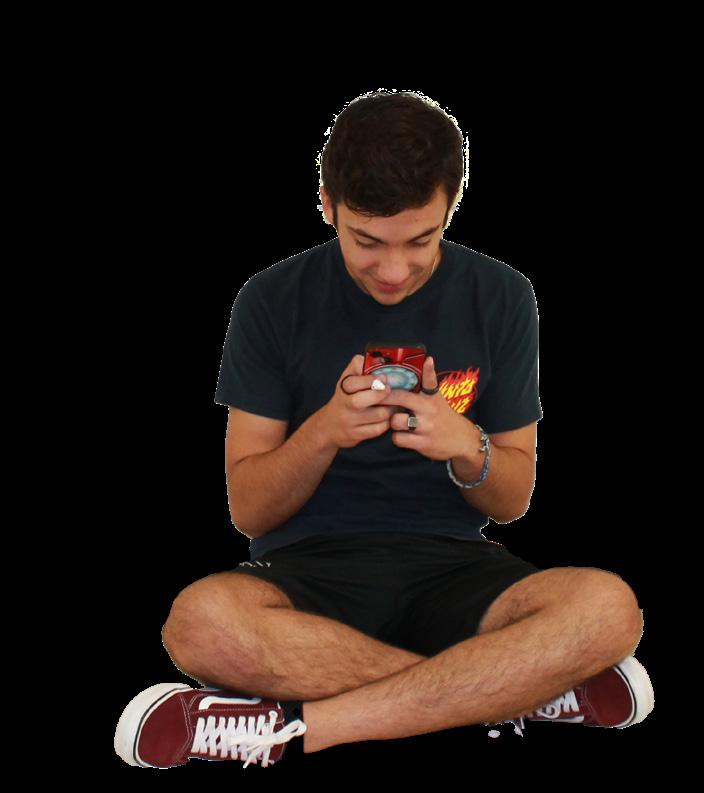
Confidence is an essential part of society today with more and more employers looking to hire self-assured leaders. With Gen Z starting to enter the workforce, confidence is even more essential to ensure a bright future. According to a poll of 204 Kaneland students, 40% agree that confidence is an important factor in the classroom and in life, which is something teachers would agree with as well.
“Confidence plays a major role in how students engage in the classroom between teachers and their peers,” social studies teacher Daniel Ferrel said. “If students don’t feel comfortable or confident in themselves, then they are less likely to become involved and more likely to not enjoy what they are doing in class. Participation and engagement are paramount to students who want to be successful and learn, and confidence in themselves plays a huge role.”
Confidence matters in all aspects of schooling, but one of the most relevant cases of needing confidence is in fine arts classes, as it takes everyone believing in themselves to produce an excellent performance.
“Confidence is vitally important in choir,” choral director Bryan Kunstman said. “Singers must be confident enough in their own ability that they are willing to make mistakes loud enough to be heard. That means they cannot be
worried about what others think or feel as though they are going to be judged for making a mistake. If a student lacks that confidence, they will never find the true joy that is possible in singing in an ensemble. In turn, they will likely struggle to reach their full potential.”
Teachers want to see their students succeed, and the only way to succeed is through failure. If one never fails at something, they will never learn how to do it right. It has become clear over the years that students become fearful of failure, resulting in a lack of confidence. When they are put into a class of peers that they don’t know, students tend to be less likely to speak up. This could lead to questions about why the younger generations might seem timid.
“Overall, there has been an increase in mental health problems with teens and students, which may lead them to have lower self-esteem and not think as highly about themselves,” Ferrel said. “Some may also stem from living in a post-COVID educational environment, in which students may not have gotten all the background knowledge they need to be successful in a course and are therefore struggling to engage in new and different material.”
Not only has COVID-19 played a role in the lack of confidence in students, but the popularity of social media has also impacted how they view themselves beyond the classroom. Students look at their peers on their Insta -
gram stories and do what humans naturally do, which is compare themselves to others.
“[Social media] has impacted my confidence by [creating] a lower self-esteem, and viewing others having a better time than I am [would make me] think to myself that I’m not good enough to do any of what they’re doing,” freshman Yasmin Talabani said.
Social media can create what is called “imposter syndrome.” The National Library of Medicine describes imposter syndrome as “self-doubt of intellect, skills, or accomplishments among high-achieving individuals.” Imposter syndrome has become more prevalent in younger generations and has greatly impacted confidence levels.
Something that also impacts the confidence levels of Gen Z is the stigma that has been built around it. Some tend to paint confidence in a negative way, implying that someone with confidence is automatically rude and full of themselves, but society’s views are ever-changing.
“I think our society generally responds well to confidence, and has for quite a while,” Kunstman said. “Perhaps the evolution in the perception of confidence is the realization that confidence is important, but self-confidence doesn’t mean that you are better than someone else. We can be confident in our own strengths without the need to find weaknesses in others.”
which is what math teacher Daniel Ponczek faced while growing up. “When I was in high school, I did not like change,” he said. “Reflecting back, [the reason] I didn’t like change was because it forced me to do something new, and in that moment, it made me
Change is perceived differently from one person to another. Some view it as strictly positive or negative, while others may view it as a combination of
Design by Elliot Krippelzhappen until someone wants it for themselves. If they don’t seem willing to address problematic behaviors, waiting and hoping may simply leave you in a position where you accept pain again and again.”
simultaneous beauty of change. After a butterfly goes from egg to caterpillar, it goes through the metamorphosis process. Once that process is complete, a vibrant butterfly we often associate with beauty and totality emerges. Each stage of the transformation is drastic, with the final result completely different from the previous stages.
For a teenager, change can feel like something minor or just as radical as the metamorphosis process. Senior Ansley Faivre recognizes change as something people may not have a choice in. “Many changes are inevitable, and accepting situations as they are is healthier than dwelling on the past,” she said. While some changes are unavoidable, they can still be hard to accept,
“I believe that change is a part of growth,” sophomore Megan Fisher said. “If life was the exact same every day, no one would learn anything about themselves or others.”
While adapting to changes may be difficult, it can be easier for some, depending on if it is for themselves or for others. It can be challenging for someone to suddenly adjust their behavior. For example, one may find that their habits are hard to break. An individual who relies on coffee in the morning may have difficulty not consuming that daily caffeine, but the adjustment is not impossible to adapt to.

According to Healthline, an American online provider of health information, “In most cases, change doesn’t
While a caffeine addiction may be something we can relate to, there are some adjustments we have no grasp on simply because we have not lived long enough to experience them. For instance, Ponczek references the adjustment of moving in with a significant other. While most high school students are unfamiliar with that situation, a similar scenario may arise as high school students could one day have to adjust to living in dorm rooms while away at college.
Moving in with someone else, in general, will require some form of adaptation from both people involved. When two people with two different lifestyles come together to share a living space, that process tends to come with adjustments.
“You grow up as you, and you have your way of doing things,” Ponczek said. “Then you have someone who has their way of doing things, and I think for that to truly work, you’re going to have to accept that you need to change a little.”
According to nationally certified counselor Tanya J. Peterson’s article from Choosing Therapy titled Openness: Definition and Benefits, “As a measure of how receptive someone is to change, openness includes traits such as intellectual curiosity, creativity, imagination, and unconventionalism. Stereotypes of this trait abound. People very high in openness are sometimes labeled as ‘unusual’ or ‘odd,’ while peo

the Federal Emergency Management Agency’s (FEMA) local, state, tribal and federal preparedness task force, “We found the state of preparedness to be positive, with continual, significant signs of improvement since the September 11, 2001 attacks (‘9/11’) painfully catalyzed the imperative for reform of what is now known as homeland security. Some of the success can be attributed to the increasingly mature integration of civil defense and emergency management activities, whose origins long predate 9/11, while others are refinements to that foundation based on lessons learned from specific events, such as Hurricane Katrina.”
essential part of leadership. After all, someone who can’t convince people of things isn’t a leader - no one is following him or her.”
For change to happen, a leader may need to enforce it. As people, we often have a few individuals we admire, and because of that, we may feel more inclined to support changes if our favorite public figures endorse them. When we hear from the people we value in our society, it may legitimize it in our eyes and the eyes of the public.
An issue that citizens of the world have become increasingly aware of is our environmental impact. The heightened awareness regarding the health of our earth can lead to a collective shift to more sustainable practices. As some stores have implemented a policy of recording the number of bags you use at the self-checkout kiosk and then charging you for them, people may start to pay attention to how many bags they use.
While that is an adjustment that close-minded people could have a hard time accepting, as they may believe it is just a way for the store to profit from plastic grocery bags, open-minded people may view it as an incentive to try and get everyone to take advantage of reusable grocery bags and think about their impact on single-use goods.
However, people may not view certain adaptations as all that surprising if they were expected, such as when disastrous occurrences force the need for change.
According to a message from
It can be more natural for people to accept such adaptations because of the expectation to improve following tragic events like these. Similar to how the FEMA task force learned from Hur ricane Katrina, we can continue to make modifications until they fit our needs.
As some individuals may be skeptical about change, influential lead ers, institutions and public figures play a significant role in fostering accep tance.
According to the University of Kansas Community Tool Box, an online resource for those working to build health ier communi ties and bring about social change, “In fluence is the ability to per suade some one to think or act in the way you want. This ability is an

One can certainly argue that we were a divided nation during the COVID-19 pandemic. As prominent society leaders and public figures took a stance on their opinions regarding the pandemic, so did the general public. For example, when influential leaders and healthcare professionals publicly received the vaccine, skeptics of the vaccine who followed those people may have been more inclined to get it. Similarly, those who followed people against the vaccine may have remained against it as their influential figures swayed them.
There can be a strange relationship between change and acceptance that not many people seem to realize. Ponczek believes that there is a unique sort of correlation that you can draw from the two. “Sometimes change will lead to acceptance, and acceptance
Have you ever walked down a school hallway, passing by students, and then you trip over your own feet? You might think about how embarrassing or awkward that was and how everyone might be laughing at you. But that is more than likely not the case.
Many people go day to day trying to please others because they worry about what people think. But why do people care so much? What are others really thinking about you, and does it really matter? When you walk into a crowd, people are mostly worried about themselves and won’t pay you any mind. Most people are too wrapped up in their own heads about what they’re doing wrong to pay any at tention to you. It is natural to care about what others think, but letting that con trol your life and stop you from being yourself isn’t okay.
“I bet people make as sumptions about how I’m an noying or loud just based on the way I speak to my friends,” junior Hannah Boyer said. “I’m a very loud, outgoing person, but people aren’t judging me for that. They’re just making an observation about what they think I’m like even though they don’t know me personally.”
Most people do judge a book by its cover, if we are be ing honest. It is hard to not make assumptions about people when you don’t know them. You may imagine what someone is like outside of the set ting you see them in. Or you may make guesses about how someone acts by the way they dress or present themselves. Even these guesses into someone’s personal life are not offensive or judgmental. So if people are thinking about you, they are probably just making assumptions as anyone does, and you should not take any of it to heart.
“I make assumptions about people. I feel like based on what people do, what they wear, the way they act or the way they speak with other people, I feel like I do make assumptions. It’s not that I judge, but I make assumptions about what those people are like,” Boyer said.
Even if someone is talking about you or judging you, you should not give them any satisfaction by being upset. You should ignore the mean words that people say about you because they are usually either jealous or dealing with their own problems. They may take out their anger or sadness on you and that may hurt, but it isn’t your fault and you should always keep your head up.
“I don’t really have the insecurity about people looking at me or talking behind my back, but even if they are, who cares? Because they’re just jealous,” junior Jack Polloway said. “And if they are, you can’t stop them from talking. They will just keep doing it.”
day-to-day life. You won’t even remember the little things that have embarrassed you most of the time, so remember that people will forget and move on quicker than you realize. Do not hold on to the words others say, and don’t focus on others’ mistakes or your own because none of it will matter all that much in the future.
If someone is going to talk about you, then let them talk. It is hard not to let others’ opinions hurt, but once you realize it doesn’t matter and fully believe that, you will feel a weight of anxiety get lifted off your shoulders and then start to feel more comfortable in being your true self.
Even if you are close to someone, you can fear that they are judging you behind your back. But if they are talking bad about you, then they aren’t a good friend and that isn’t your fault.
“If people like me, that’s an added benefit. But if they don’t like me, then I go, ‘Not everyone is going to like me,’” math teacher Travis Berth said. “And those relationships I’m sure just won’t work out.”
Sure, people could be mean to you, but is it better to suffer and let it get into your head when you can’t do anything about it? Let them talk about you, be strong and don’t let others’ views affect you. Others may try to embarrass you or make fun of you because they have previous grievances with you, but even then, they are just talking. Don’t let meaningless words get in the way of things.
When you’re anxious about others’ opinions, just try to remember that nothing matters that much in the long run. No one is going to remember the small things that happen to you in your
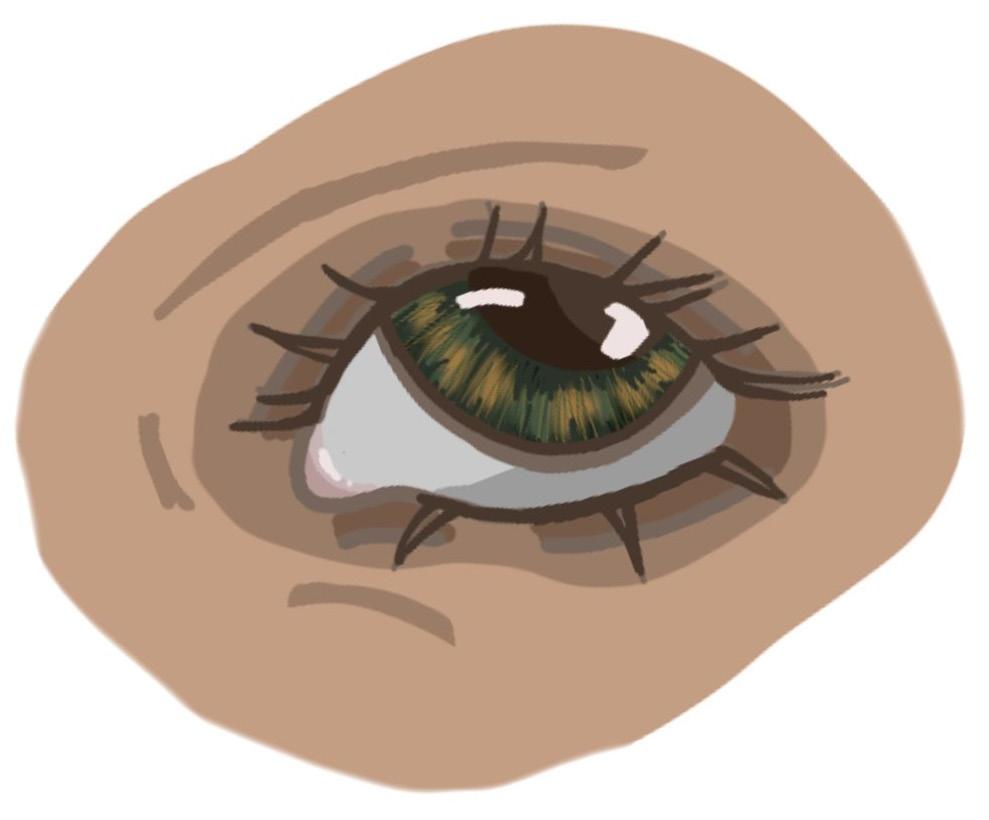
Sometimes it may be hard to let relationships go, but staying true to yourself and your real friends is important. Don’t let those bad friends get in the way of how you live your life, and don’t let them give you the fear that other relationships in your life will similarly hurt you. But, if you are worried, don’t let the fear that something might happen get in the way of your future relationships.
So how many people actually talk about you behind your back? It definitely depends on the person and what you’ve done, but even then, people are way too caught up in their own lives to care about what you’re doing, a little trip in the hallway or your mistakes. Instead of focusing on others’ opinions, strengthen yourself. Be confident and ignore what others say about you. Whenever you make a mistake or are embarrassed about something, just remember that people aren’t always watching you.
Kaneland High School 47W326 Keslinger Rd. Maple Park, IL 60151 (630) 365-5100
www.kanelandkrier.com

Member of IJEA, Quill & Scroll, NSPA, NISPA IHSA State Finalists 2013-2022
IJEA First Place for Krier Online 2021
IJEA First Place for Best Hybrid Publication 2021-2023
IJEA First Place for Best Overall Publication 2021-2023
Subscription rates: Five issues and three supplements
School-delivered: $25; Home-delivered: $35
Katie Pfotenhauer
Co-Editor-in-Chief of Print and Co-Copy Editor
Lizzy Sidman
Production and Ads & Business Executive
Carli Filek
As school starts again, we are once again confined to our school’s walls, surrounded by headache-inducing fluorescent lights, getting hand cramps from writing timed essays and staring intently at math problems, hoping the correct answers might suddenly reveal themselves. However, within these walls, we can also find our new classmates, best friends and romantic partners who will make us feel comfortable in this stressful environment. Unfortunately, no matter how we envision this year, many social dynamics will change, but this can be for the better.
Drama will undoubted ly plague friend groups at some point, with relationships that we once believed to have the fortitude of a brick wall crumbling with a single text. This social instability will leave many searching for answers in the chaos.
Guidance counselor John Markovich offered insight on gauging the value of relationships undergoing turmoil: “If [a conflict] is not something that is going to impact your relationship, let it go. If it is, the question becomes if this connection is important enough for me to go and have that difficult conversation.”
Idling in the limbo that is the uncertainty of whether or not a relationship will continue is unhealthy for everyone. Even though answering Markovich’s question could be difficult, it must be answered. Markovich also suggests that

the friendships made as young people will be some of the best in our lives, so it is crucial to find the beauty in each relationship, past or present. Being able to reminisce on relationships - even those we have ended - is indispensable in our attempts to grow as people and forge new connections.
Letting go of people is challenging, but maintaining healthy relationships with those we choose can prove to be more difficult. With connections we choose to nourish, it is critically important to learn to forgive even the smallest of issues.
The tiniest annoyance is best communicated to prevent the slightest possibility that it could lead to something worse. We must fight for relationships that we genuinely believe in, and that means establishing stable communication. Becoming comfortable with “I apologize” and “I forgive you” is the only way to preserve a connection.

Forgiveness can be grueling and sometimes unnatural, but it is necessary. With forgiveness, you can find the strength to be with or leave somebody, allowing you to find the beauty in human connection. Forgiveness is not succumbing to others; it is valuing yourself.
Markovich conclusively advised, “You are going to hurt people, you are going to get hurt. The more you can let that go and forgive, the more you can focus on the things that matter in life.”
EXECUTIVE STAFF
Sela Valignota
Co-Editor-in-Chief of Print
Elliot Krippelz Design and Photography Executive
Rafika Khan Editor-in-Chief of Web and Co-Copy Editor
MANAGING EDITOR STAFF
Co-Social Media Manager

Sofia Williams
Sports Coverage Manager
Taylor Anello Co-Broadcast Manager
News 1 Adrianna Wells
Sports 1 Carmella Rio
Delaney Calabrese Co-Broadcast Manager
EDITORIAL STAFF
Co-Sports 2 River Mullins and Lucas Fiedler
Review Sophie Thill Voices Kayli Loonam
Feature 2 Jasper Paulson
Editorial Elliot Krippelz
Centerspread
Sarah Slattery
Audrey Walker Co-Social Media Manager
Andrew Valentini Co-Broadcast Manager
News 2 Casper Suehs Advice Preslee Sutherland
Opinion 1 Nate Sand Opinion 2 Zoe Gannon
News 3 Sophie Ponce de Leon
Feature 1 Natalie Lycan and Riley Swiderski
Profile Isa Alba
Jackson Kottmeyer Sports & Activities Executive STAFF
Pierce Antia, Payton Bonebrake, Olivia Cotter, Erin Doucette, Benjamin Falk, Anna Gatz, Olivia Krasuski, Charlize Landa, Bobby Leavey, Faith Maschman, Sara Nugara, Clara Saros, Sophia Schroll, Justin Sommers, Hadley Springer, Lily Stevenson, Arielle Tautkus, Hailee VanCura, Emma Weintraub, and Evan Whildin
Cartoonists Dane Coyne and Zoe Gannon Print Production

ADVISORS
Nicole Larsen Print advisor Dominic Bruno Krier advisor
Editorials represent a majority opinion of the Editorial Board and are not necessarily the opinion of Kaneland administration, staff, students or parents. The Krier Editorial Board consists of designated Advanced Journalism students: Isa Alba, Taylor Anello, Delaney Calabrese, Dane Coyne, Sophie Ponce de Leon, Lucas Fiedler, Carli Filek, Zoe Gannon, Teaghan Hardy, Tiffany Johnson, Rafika Khan, Olivia King, Jackson Kottmeyer, Elliot Krippelz, Nathan Lapitan, Kayli Loonam, Natalie Lycan, Barbara Martinez, River Mullins, Jasper Paulson, Katie Pfotenhauer, Carmella Rio, Nate Sand, Lizzy Sidman, Sarah Slattery, Casper Suehs, Preslee Sutherland, Riley Swiderski, Sophie Thill, Andrew Valentini, Sela Valignota, Audrey Walker, Adrianna Wells, and Sofia Williams. Students make all publication decisions.
Letters can be sent to the address above or e-mailed to krier@ kaneland.org. Letters must be signed (names may be withheld under extraordinary circumstances as deemed by the editorial staff) and must be under 300 words. The Editorial Board has the right to work with writers to edit for clarity and length. Any material that is potentially libelous, obscene or disruptive will not be published at the discretion of the Editorial Board. All decisions to publish or not publish letters are made by executive editors. The Krier has been an open forum since 1974. As an open forum, we restrict editing to staff members only; prior review and editing are prohibited by people outside the staff.
Body positivity is based on the idea that everyone in any body should be confident and happy. It creates the mindset that all bodies are beautiful. While this concept has been championed for years, many fail to see the underlying harm that comes in the movement by basing someone’s selfworth on the appearance of their body. Rather, we should be focusing on body neutrality, another rising trend that promotes loving your body for what it does for you, and being at peace with the way it looks.
“Body neutrality is more focused on liking your body, and it encourages individuals to shift their focus away from their physical appearance and towards other aspects of their identity,” health and physical education teacher Kristyn Crawford said.
An example of body neutrality may be thinking about your body from the standpoint of what it does for you. Author, writer and speaker Jessi Kneeland offered her perspective to emphasize the goal of body neutrality in an article for TIME Magazine.
“Say to yourself, in your head or out loud, your big complaints about your body, and follow each one up with the phrases, ‘That’s not a problem’ and ‘That makes sense and is okay’ or ‘That doesn’t mean anything bad about me,’” Kneeland said.
When thinking about body neutrality and body positivity, the ideas seem very similar. Both are focused on balancing acceptance with personal well-being, making the difference between the two a thin yet important line. Body positivity creates a toxic mindset towards bodies in various ways. It magnifies one’s visual appearance and creates standards in the beauty community, misinforms people through advertisements and causes unhealthy habits. As the mindset of constant positivity stresses the idea that we have to be proud and confident in ourselves, it creates unrealistic expectations. This added pressure only increases the possibility of letting yourself down.
“I think body positivity is supposed to make people feel comfortable in their own body,” senior Calee Lukoshus said. “However, there are always going to be people unhappy with how they
look, so they will try to reach unreach able body goals. I don’t think it’s the body positivity movement’s fault that this is happening.”
However, this is not to say that Lu koshus sees the movement as always positive when trying to combat negative thoughts towards it. She explained that some of the negative perceptions come from old ways and trends reappearing in the beauty world.
“I think as much as people try to make it positive, there’s always going to be a negative aspect to it,” Lukoshus said. “I’m glad there is a positive mindset towards all body types in the beauty community now, but as old trends are coming back, the bad body image issues from those eras are also coming back.”
There is a divided opinion on how to approach beauty standards as they evolve. Some believe that addressing the negative aspects will bring more healing and positivity. Others feel that a more neutral standpoint is necessary in such situations.
“I do take issue with the notion that we should be able to feel a constant flow of celebratory happiness and af fectionate gratitude toward our bod ies, or that we have to joyfully embrace every dimple, every jiggle, every inch. That’s neither realistic nor necessary,” Kneeland said.
The marketing push behind the body positivity movement is a significant contributor to why the concepts behind it have changed in connotation. Many advertisements use similar phrases like, “All bodies are beautiful” and “My body is perfect.” These can be positive words to practice for some, but to others they can be extremely harmful to one’s mindset if they are already insecure about their body. If one believes something is wrong with their body but is constantly being fed these promotional phrases, it can bring more tension into play. The stress between wanting to love your body and feeling bad about it is equally as harmful as trying to keep up with the stereotypes and standards.
These advertisements may communicate an important topic, but de -
ways be in peak health. When factoring in height and individual health complications, making broad statements directed towards everyone is not the right action. Unhealthy habits stemming from false advertisements are easy to accept, but tricky to combat. Crawford, bringing in her knowledge of health, agreed.

“The focus on body positivity can sometimes overshadow the importance of overall well-being and the impact of lifestyle choices on our health,” Crawford said. “Embracing all body types and promoting self-confidence should go hand in hand with maintaining a healthy lifestyle.”
The world of body positivity and body neutrality is challenging to navigate. It stems from health, clothing and the overall beauty-related community. It is all about learning to find a balance between acceptance, healthy habits and being at ease with your situation through a mindful approach.
All it takes is scrolling through Instagram or glancing at news headlines to know that there are a range of issues plaguing our world right now. Climate change is increasingly evident, gun control is nearly non-existent and there are still a concerning amount of social barriers we have yet to break through. Very little, though, has been solved due to the same voices expressing the same opinions. It is time for younger generations to get involved in politics and make the changes we have all been waiting for.
Our political situation is highly problematic. To start bringing change and allowing younger generations to get involved in the political scene, we must first recognize that our country is facing a significant divide.
“There is little doubt that political polarization is significant in the United States,” Aurora University Political Science and Public Policy professor Dr. Mark Petersen said. “The issues we struggle with are difficult to solve, and we live in a complex and changing society. [Even though] division and conflict are always with us to some extent,
activist government.”
With older generations not wanting to see a lot of change, it shows that our generation is on a different path to progress than what the people before us viewed as growth. We are all relatively young and have grown up watching older generations make decisions for us. We are watching as climate change destroys our world, becoming an international emergency. Yet we still see human nature move us backwards in an environmental sense.
But setbacks only make for more significant reasons to get involved. Change can happen on a national or even local level.
Sophomore Steven Maxwell, for example, is an activist speaking out against Crown Development’s proposed community that includes warehouse developments in Sugar Grove because he doesn’t want to grow up in an environment that isn’t enjoyable.

“It is important for kids to speak up because if we didn’t have the kids and it was just adults speaking, kids that are growing up in the area and the environment won’t enjoy it as the older generation will move on,” Maxwell said. “These warehouses will still be here forever.”
to the news on the internet. This is something that we have seen our whole lives, which other generations haven’t dealt with to the same degree. We see every terrible thing happening, and it can be highly damaging.
But even though younger gener-
change, progress and improvement are as well.”
The polarization of our country reflects the growing rage between political parties. But despite that rage, there is also hope for finding peace. And with peace, things can improve.

The path towards improvement runs through younger voices. According to a 2019 Pew Research Center article, “Gen Z and the Millennial generation say the government should do more to solve problems. Still, most older generations would like to see a less
Getting involved at the local level is what Petersen, the Aurora University professor, mentioned when he stated that we can improve and change. Maxwell is getting involved in Sugar Grove because he sees something he wants to change and is making a difference.
Teen voices are vital. Gen Z alone has cultivated thousands of activists who have united over concerns with climate destruction, gender inequality and a lack of LGBTQ+ rights. Without our voices, there wouldn’t be consideration for the future. Many adult voices aren’t thinking about the long-term because they won’t be dealing with these problems for as long as younger generations will. We are the last resort.
Even though it seems obvious that we need to make changes, many scary things are happening in the world right now. There is constant coverage of wildfires, mass shootings and war-torn countries. Younger generations are being exposed to the world’s corruption at earlier ages than before. A lot of Gen Z’s anxiety comes from being exposed
make,” McNally said. “Now, of course, there are things that a small child doesn’t need to hear or know about. But I think that once we get students at the high school level, there’s not really anything I would personally feel the need to shelter them from.”
Younger generations need to get involved in what is happening around them because if they don’t, then who will? Getting involved doesn’t necessarily mean making extreme political moves. You can take smaller steps like joining a campaign for your favorite politician or voicing your opinion on social media.
“And, of course, vote. Or early vote. But just vote,” McNally said.

Anybody who has encountered senior Abby Fitts, whether in passing or as a close friend, knows that she’s creative in many ways. She’s imaginative in her methods of making people smile, in her jokes and in her passion for making art. Throughout all aspects of her life, Abby is creating a more colorful world around her.
She mostly practices traditional styles of art but is starting to dabble in the world of colored pencils and pen. Her interest in art has been a source of self-growth, along with other hobbies such as researching religions and long-distance running.
Throughout Abby’s art ventures, her family members have been very supportive, each in their own way. Her parents will buy her art supplies, give helpful feedback and praise her work. Her father, especially, celebrates her art.
“My dad sometimes makes my art his lock screen, which is kind of embarrassing but so nice,” she laughed.
Abby took Advanced Placement (AP) Art last year and enjoyed the class. Having time to learn new techniques and refine her skills was beneficial for the development of her work. Her portfolio focused on the approval and validation she'd receive from her peers, and how others’ perceptions of her negatively affect who she is, which her dad especially liked.
“Her AP Art project last year was phenomenal. I loved the whole perspective of who she was as a person,” Abby’s father Daryl Fitts said.
As Abby talks about the support she receives from her family, it is clear that she is incredibly grateful and feels encouraged to experiment and grow with her artistic endeavours. One of the people who helped her when she was just getting started was her uncle, who is a professional artist. Years ago, he sat down with her and taught her the basics.
“It’s a really cool experience sitting down with [my] uncle, and he’s showing me tips and tricks, and I still think about those sometimes,” she said.
Her friends also support Abby and see the benefits she receives from practicing art. Abby Grams, Abby’s friend of over seven years, described the impact
art has had on Abby.
“I think [art] has had a good impact [on her] mental health and keeping busy,” Grams said. “She’s met a lot of new people and found out more about herself.”
By dedicating so much time to creating art, Abby encounters many struggles throughout the process. One of the most poignant struggles is her tendency to be self-critical.
“Something I need to work on is dealing with the stress of not liking what [I’m] doing better,” she said. “Even though a stranger might look at [my art] and go, ‘Oh! I think that looks amazing and really cool,’ [I’m] like, ‘This is the worst thing I’ve ever made! I’ve never
painting herself, she’s able to project her emotions onto a canvas and physically see what she’s feeling.
She plans to keep art as a positive outlet in the future by not majoring in the subject when she attends college. Although she wants to learn more about art techniques and history, she wants to keep it as a hobby. One of her other hobbies is researching philosophy and religion, which she started doing earlier this year. She has enjoyed learning more about her faith and beliefs.
“For the first time in my life, I actually feel like I have opinions and beliefs that I can stand towards,” she said.
Abby’s father has supported her as she has developed her recent interests. He admires that she has done her own research into not just her religion but also other religions.
“[She has] come to her own determination of what she thought was best for her, which I think is very powerful in developing her identity,” Darryl Fitts said.
made anything worse than this in my life!’”
Although this process is stressful for her, she’s learned to step back and realize that it’s not always that serious.
“The whole point of art is to have fun with it and express yourself, so why am I sitting here hating everything I’m making? It’s so dumb,” she said. “I’ve learned to either set it aside and move on to the next day or realize maybe it’s not actually that bad.”
Despite the frustration that can come from practicing art, Abby also reaps many benefits for her mental health.
“Art has been a fantastic way for me to show my emotions or my feelings,” she said. “It’s like a diary but more expressive. In a diary, you’re limited to words, whereas with art, you can just do whatever you want.”
Abby has composed many portraits, varying from pets to peers, based on commission from others, but self-portraits, specifically, are a good way for her to process her emotions. By
Abby also enjoys long-distance running and is a member of Kaneland’s cross country and track and field teams. She believes that getting outside and doing physical activity is incredibly important for people’s mental and physical health. Like art, running is a good stress reliever for her.
“Going out there on a nice, peaceful, long run? Are you kidding?” she said, laughing. “You’re just out there, exerting energy, and you’re with your thoughts, and maybe you even have nice music in? It can be so nice.”
Another benefit of running is her friendships with the other girls on the cross country team, whom she’s gotten closer to lately. She often jokes around with the team, which is another key characteristic of her personality that other people love about her.
“I love making people laugh so much," she said. "That’s one of my favorite things to do.”
Whether she is joking around with her friends or painting a self-portrait, Abby is creating a more vivid life around her, and for now, Abby has no plans of stopping her artistic endeavors.
“I would love to be someone who continues this for the rest of my life,” she said.
Co-Social Media Manager
For the first time in my life, I actually feel like I have opinions and beliefs that I can stand towards.- Senior Abby Fitts



On May 7, 2015, 18-year-old photographer Shea Glover uploaded a video to YouTube where she took photos as she told people they were beautiful. Glover did this experiment as part of a school project to capture people’s natural reaction to that compliment. The video created an explosive trend where people would film others’ responses before and after being told something.

At Kaneland High School, beauty can be found everywhere through the students and faculty that make up our school environment. Everyone we photographed looked happier when they were called beautiful. The genuine smiles in the photos show the impact that kind words can have on people. When beautiful words are shared, the beauty in the person is revealed.



















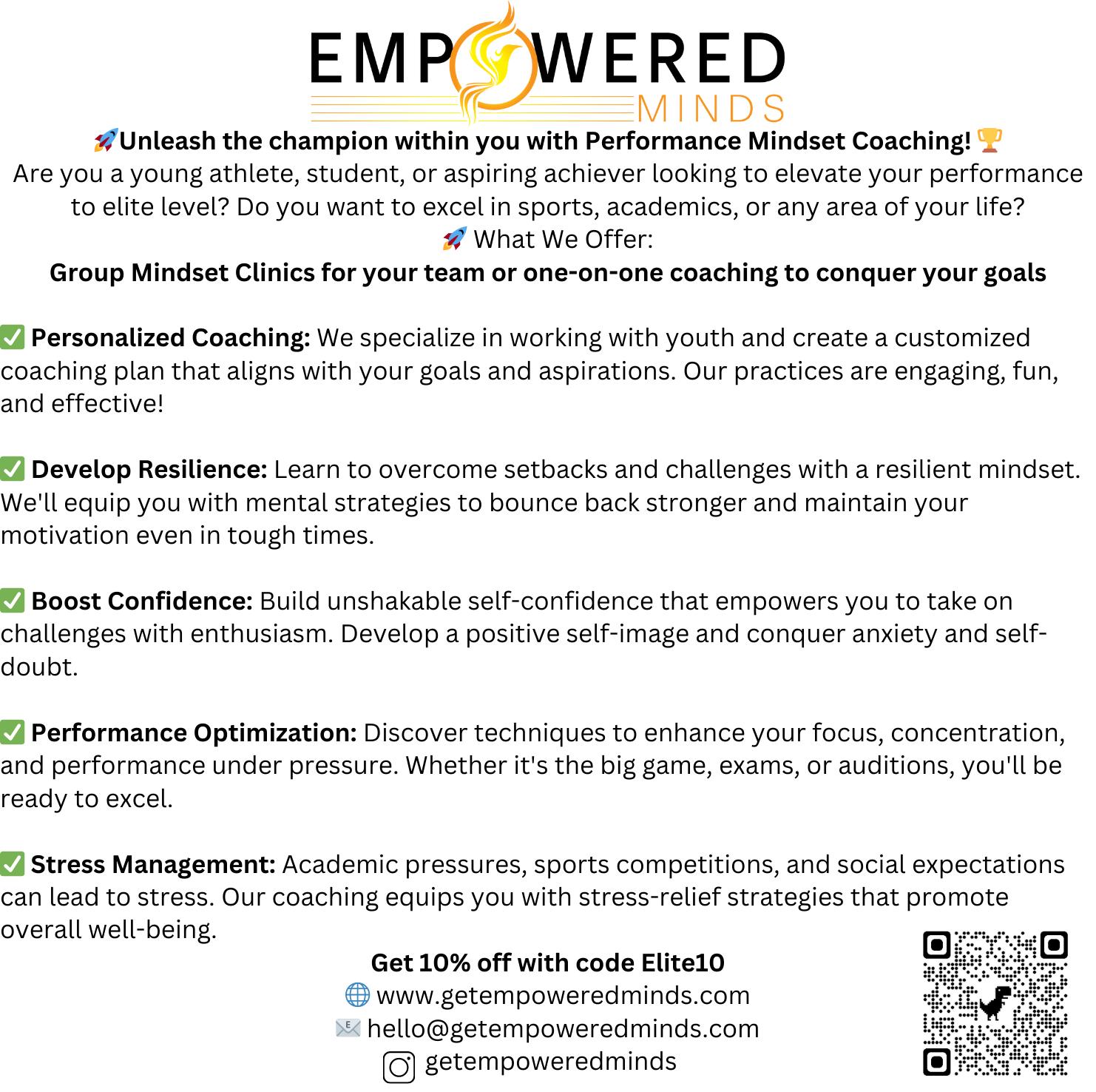



Page

“Sometimes change will lead to acceptance, and acceptance is what could force you to truly make a change.”
Daniel Ponczek, Teacher page 14, Centerspread
“Art has been a fantastic way for me to show my emotions or my feelings.”
Abby Fitts, Senior
21, Profile